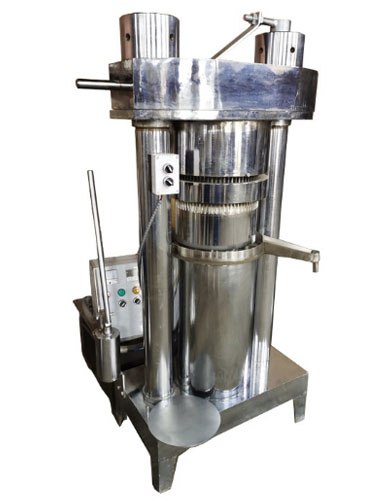Common malfunction of hydraulic oil press
Hydraulic oil presses are widely used in the processing of soybeans through cold pressing methods. This preserves the proteins in the soybean cakes, which can then be used to make various bean products like Tofu and soybean milk. The remaining residues can also be used as fertilizer, making hydraulic oil presses a versatile tool in the agricultural industry.

A hydraulic oil press consists of two main parts: the hydraulic part and the pressing part. However, like any other machinery, hydraulic oil presses are prone to malfunctions.
Troubleshoot Common Malfunctions of Hydraulic Oil Presses
1. Inadequate hydraulic pressure:
This issue can occur due to several reasons, such as dirty oil output, poor contact of the oil valve bolt with the valve seat, or overlarge wearing clearance between the small piston and pump body. To resolve this issue, the oil output and valve bolt should be unpacked and washed thoroughly. Polishing them can also help make them dovetailed. In cases where the oil valve bolt and valve seat are not dovetailed, they should be polished or tightened with screws. If none of these solutions work, it may be necessary to replace the pump.
2. Hydraulic oil pump cannot pump oil:
There are several reasons why this issue can occur. It could be due to a blocked oil screening, settings attached to the oil input mouth after prolonged use of hydraulic oil without sealing of the oil door, thick oil or oil that has frozen due to cold weather, inadequate oil in the box, or a partially vacuumed hydraulic pump. To resolve this issue, the oil screening should be cleaned and washed thoroughly. If the hydraulic oil has been used for an extended period, it may be necessary to replace it or let out the old oil and wash the oil outlet before polishing it to ensure good sealing. In winter, replacing the thick oil with thin oil and improving room temperature can help. Additionally, adding enough oil to the oil box or pulling up the small piston and pressing it after filling up the oil can also resolve this issue.
3. Hydraulic oil are leaking out from the hydraulic:
One of the most common issues with hydraulic oil presses is hydraulic oil leaking out from the hydraulic cylinder and piston. This can be caused by the rubber cup being in the wrong direction or by damage to the rubber cup. To solve this issue, the rubber cup should be installed again in the correct direction or replaced with a new one.
4. The hydraulic oil press safety valve is not work:
Another issue that can arise is the hydraulic oil press safety valve not working properly. This can be caused by dirty oil or dirty things attached to the contact surface, a spring losing elasticity, an adjusting screw not being up to the specified pressure, or balls damaging the safety valve due to frequent overload. To solve this issue, the safety valve should be unpacked and washed, with the valve mouth and gage indicator polished if they are damaged. The spring should be replaced, and the adjusting screw should be re-adjusted to ensure that its pressure is up to 40 MPa. The valve should be polished and new balls should be replaced, and the machine should be operated according to regulations.
Hydraulic oil presses are an essential piece of machinery for pressing oil plants. While they may experience some common issues, these can be easily solved with proper maintenance and care. Our hydraulic oil press has the advantages of high pressure, high oil yield, compact structure and controlled heating. It can be widely used in the pressing of oil plants such as sesame, soybean, peanut, flax, walnut kernel, tea seed, almond kernel and pine nut(removing the peel will get better effect). By following the solutions outlined in this article, you can ensure that your hydraulic oil press operates effectively and efficiently for many years to come.

